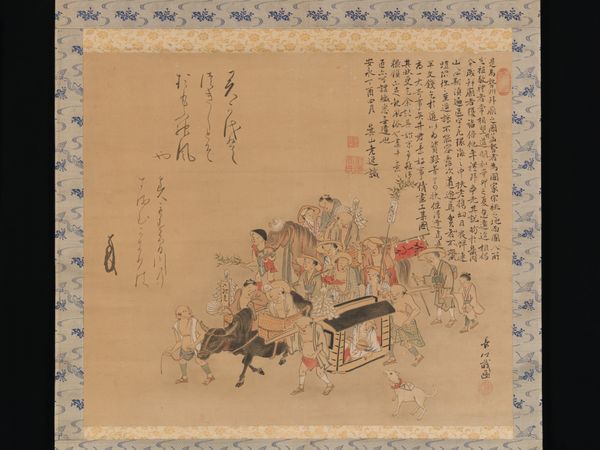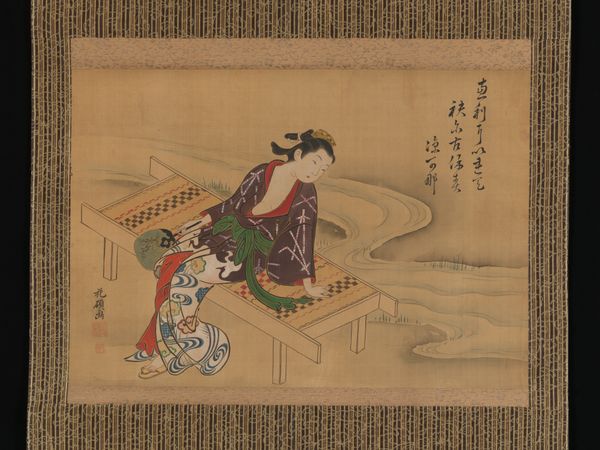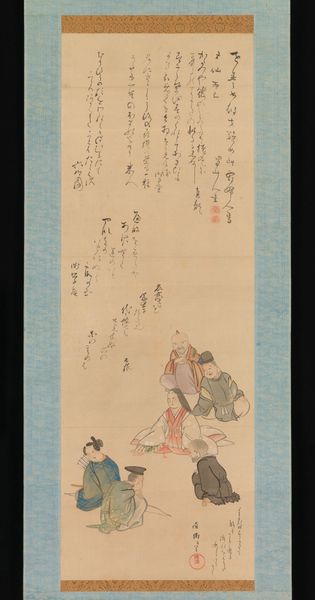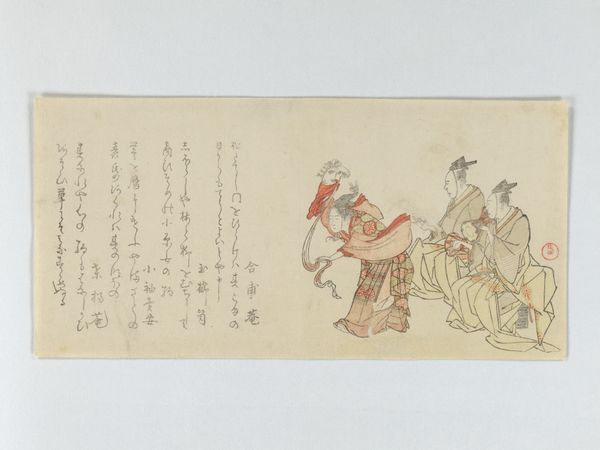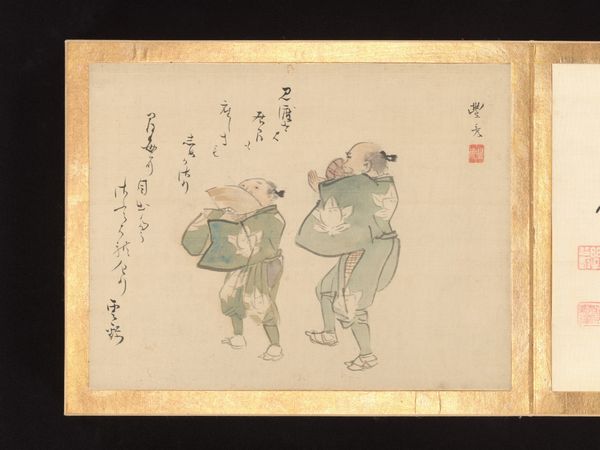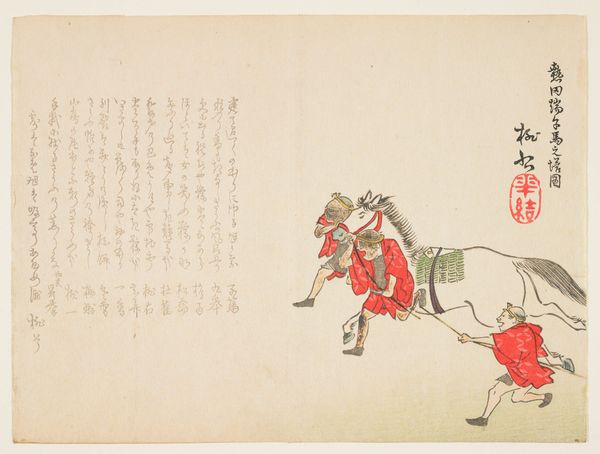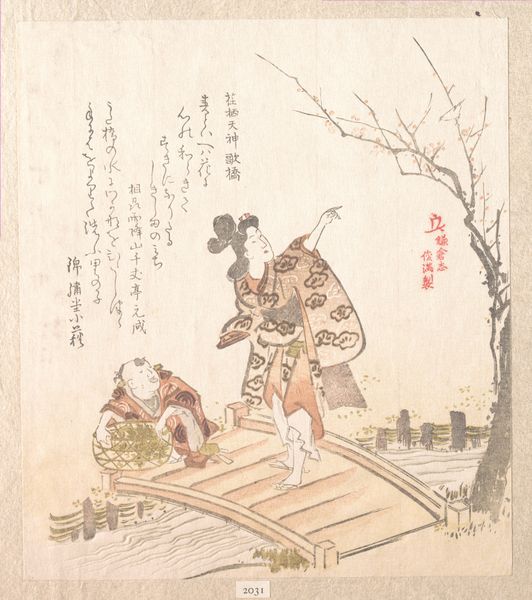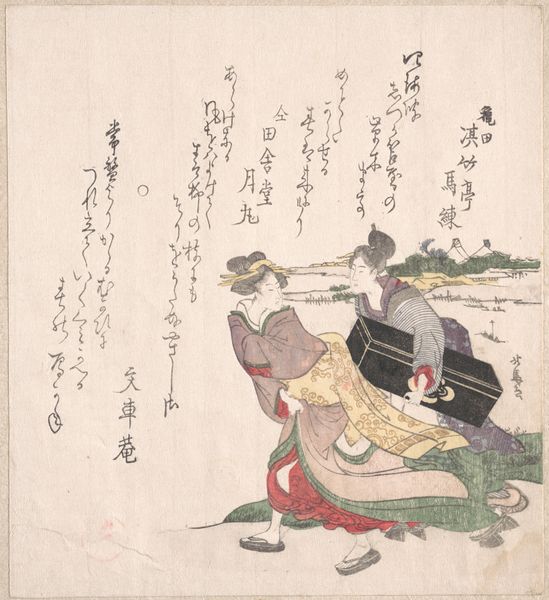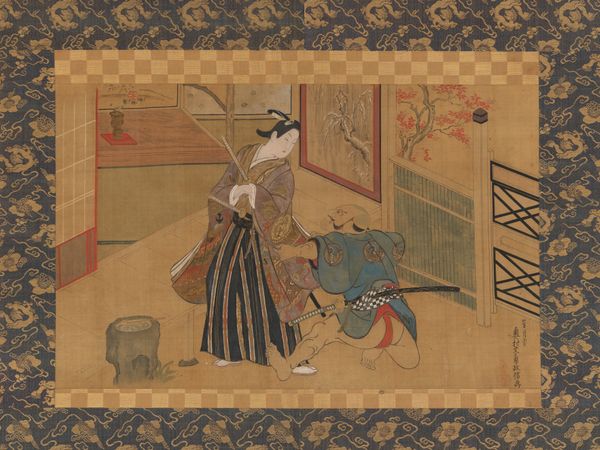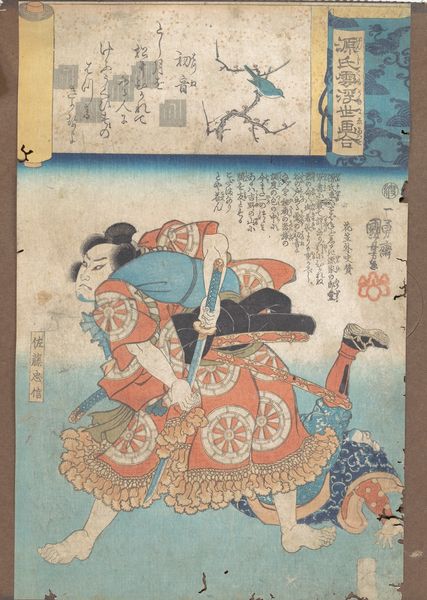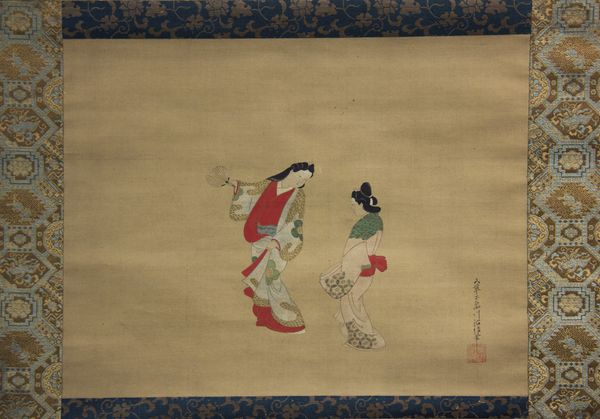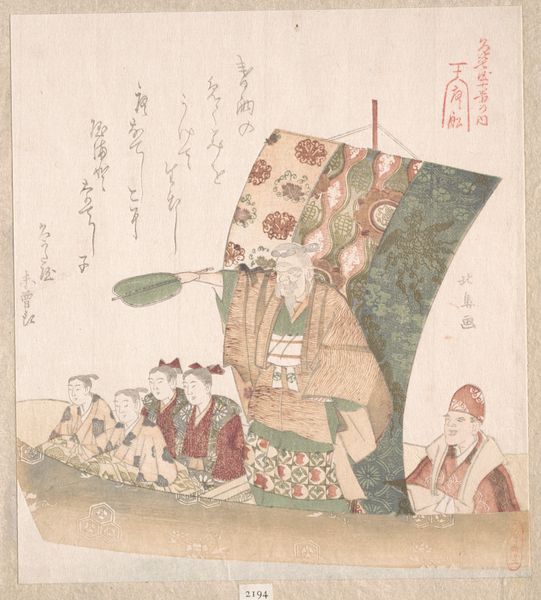
print, watercolor
#
narrative-art
# print
#
asian-art
#
ukiyo-e
#
folk art
#
figuration
#
watercolor
#
linocut print
Dimensions: Image: 15 7/8 × 21 7/16 in. (40.3 × 54.4 cm) Overall with mounting: 44 11/16 × 25 5/16 in. (113.5 × 64.3 cm) Overall with knobs: 44 11/16 × 27 3/8 in. (113.5 × 69.5 cm)
Copyright: Public Domain
Editor: Here we have “Fuwa Banzaemon,” a watercolor print by Utagawa Toyokuni II, sometime between 1800 and 1868. The figures have such distinctive attire, but what I'm wondering is, what kind of story is being told? Curator: That’s a great question. This work really invites us to consider the theatrical and social narratives circulating within Edo-period Japan. Utagawa Toyokuni II, working in the ukiyo-e tradition, captures more than just an image. He presents us with a snapshot of class, gender, and power dynamics. How do you read the woman's positioning in relation to the two male figures? Editor: She seems to float above them, somehow more significant. Her robe is the most detailed, colorful of the three figures, but I can't figure out the situation that's portrayed. Curator: Precisely. She commands attention, doesn't she? Now, let's consider the male figures, seemingly in conflict. What does their stance, their simplified presentation, tell us about societal expectations and perhaps even critiques embedded within this artwork? Remember, ukiyo-e prints weren't just decorative; they were often subversive. What elements of "folk art" do you notice? Editor: Well, there is a lot of stylization... maybe that means that we can consider these figures more as representative types than portraits? Almost like characters in a play. The folk style emphasizes the narrative. Curator: Exactly! And within that narrative, there's space for exploring those tensions I mentioned. It seems like each viewing unravels new meanings depending on the interpreter's cultural background. Editor: This reminds me of contemporary debates around representation and power in media. That’s fascinating; thank you. Curator: And thank you! Thinking about historical context helps us decode visual cues and encourages critical thinking about enduring power dynamics.
Comments
No comments
Be the first to comment and join the conversation on the ultimate creative platform.
